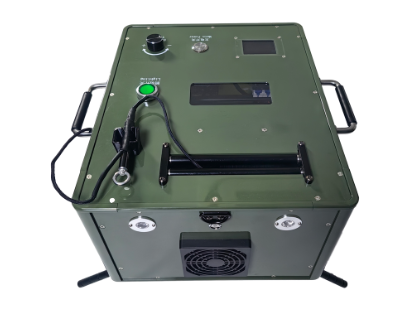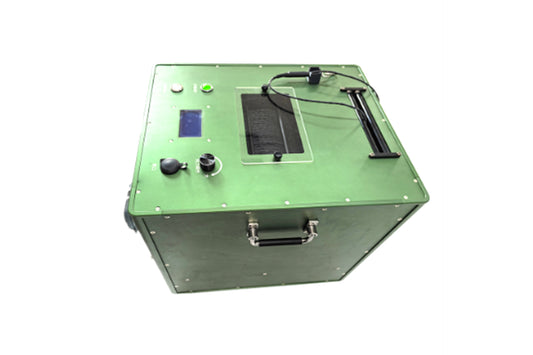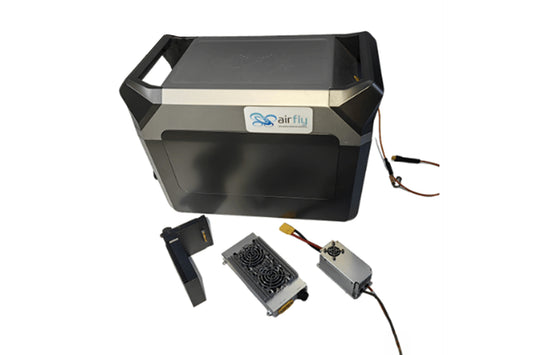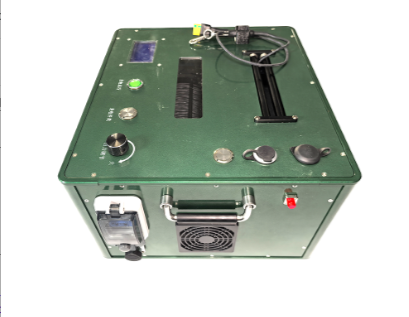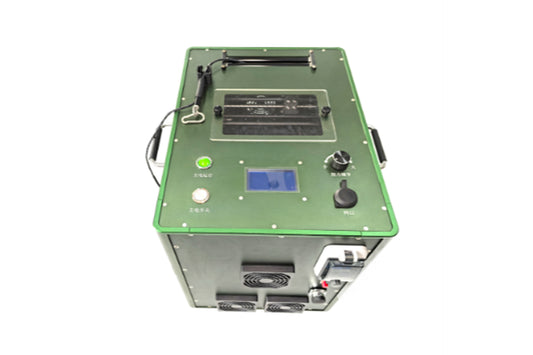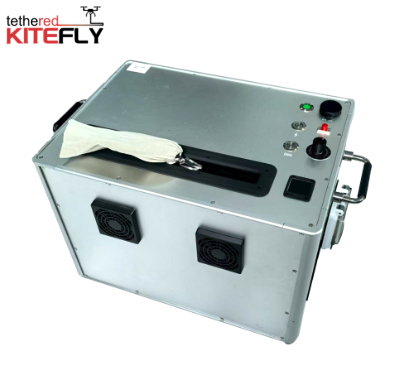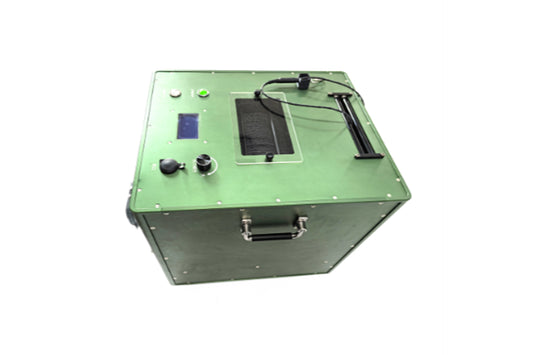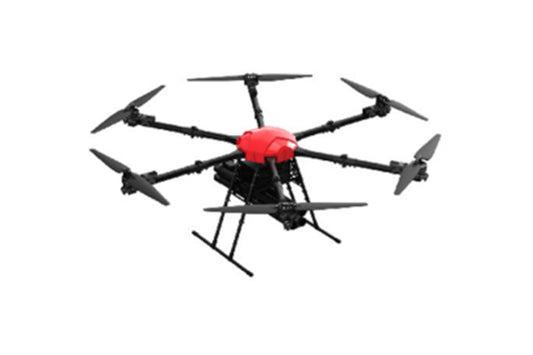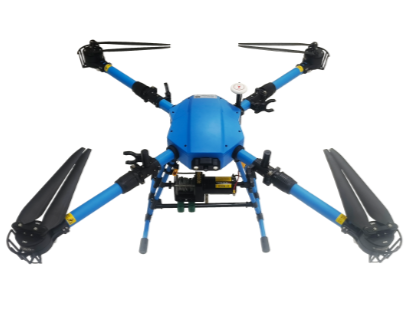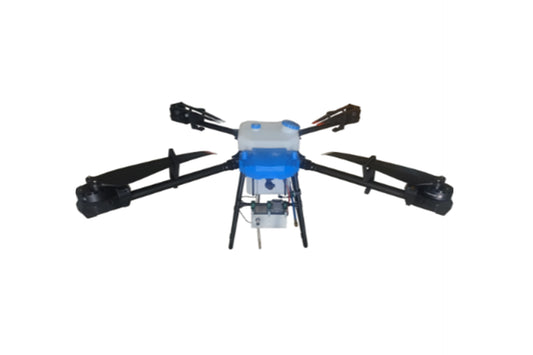The AF-G40 tethering system primarily consists of a retractable winch, a tethering housin, integrated tethering cables, and an integrated tethering ground power supply. This system provides wired power, information transmission, and cable retraction for the tethered drone. The retractable winch includes the system housing, main frame, cable storage drum, and control circuitry.
| NO. | Items | Technical Parameters |
| 1 | System Box Dimensions | 472mm*427mm*497mm (L/W/H) |
| 2 | System Box with Handle | 515mm*466mm*514mm (L/W/H) |
| 3 | Control Panel Dimensions | 120m |
| 4 | Single Cable Length | 49kg±0.5kg |
| C | Weight | AC380V |
| 6 | External Power Supply | Minimum 2m/s |
| 7 | Maximum Reeling Speed | Passive Payout/Active Reel-In |
| 8 | Operating Mode | DC1000V |
| 9 | Power Supply Output Voltage | 24kW |
| 10 | Maximum Power Output Power | ≤24kW |
- Using the G40 tethering box requires three-phase AC power. For normal operation, the onboard power supply must be installed on the drone. Connect the tethering cable output to the drone's onboard power supply. Secure the hook to the load plate. The tethering box's high-voltage cable output uses an XT90 connector. Connect the cable to the drone's onboard power supply as shown below, and secure the load-bearing hook (the cable bears the force).

- 1) During operation, first lower the torque adjustment knob to the lowest setting, then close the circuit breaker. This will power on the system and illuminate the display on the display panel.
2) To power the drone, press the "Main Power On/Off" button. The tethered box cooling fan will begin operating, and the "Main Power Running" indicator will illuminate steadily. The display will show the current output voltage, current, and power of the main power cable. When the system is carrying current, the indicator will flash, indicating that power is being supplied to the aircraft.
3) To prepare for takeoff, lower the torque knob to the lowest setting or increase the torque slightly (in windy conditions).The drone unleashes the cable. When reeling in the cable, adjust the torque knob from low to high, synchronizing with the drone's descent speed. Alternatively, adjust the torque to the appropriate level from the outset to maintain a constant tension in the cable. The drone then releases the cable, forcing it to hover. During landing, the cable automatically reels in due to the tension.
4) After completing the mission, turn off the main power switch and the high-voltage DC power before reeling in the remaining cables to prevent accidental electric shock. Finally, turn off the main power switch and unplug the power cord.2. Start the drone and fly it to a height of about 5 meters. Press the main power switch. After the device is powered on, press the main power switch button to start the power. The warning light will turn green and the drone will fly upward. Rotate the reel knob switch to straighten the cable. If the drone needs to descend, turn off the cable power when it is about 5 meters above the ground. The winch will reel back to zero and the drone will land on the ground. - 1. Storage and Transportation
1) Before transporting or storing, be sure to remove the tethered power supply air unit and drone battery from the drone and store them separately. Do not place drone batteries near heat sources or flammable or explosive materials.
2) Keep the storage environment dry and avoid placing drone batteries in locations where they may leak or become damp.
3) If the tethered device is not in use for an extended period of time, for storage exceeding three months, the recommended storage temperature is 22°C to 28°C. Do not store the tethered device or drone battery in locations below -10°C or above 45°C.
4) If the drone battery is not in use for more than 10 days, be sure to discharge it to 40% to 65% of its optimal storage capacity before storage. Do not store it in a fully discharged state for extended periods to prevent over-discharge and damage to the battery cells, rendering it unusable. It is recommended to recharge and discharge the battery every 2-3 months to maintain battery activity. 5) The default cable length for the AF-G40 tethered power supply box is 120m. During normal use, extend the cable 50-60m. The cable outlet must be centered when the drone is hovering. Wear insulating gloves if touching the power supply cable while the device is powered on.
5) When transporting the tethered power supply box, ensure that it is shock-absorbing. Loosening of internal screws is normal.
2. Maintenance
Inspect and maintain the tethered power supply every 50 takeoffs and landings or every 20 hours of flight to ensure proper operation. B. Inspect all components of the tethered power supply for any significant impact and ensure that all moving parts remain smooth.





